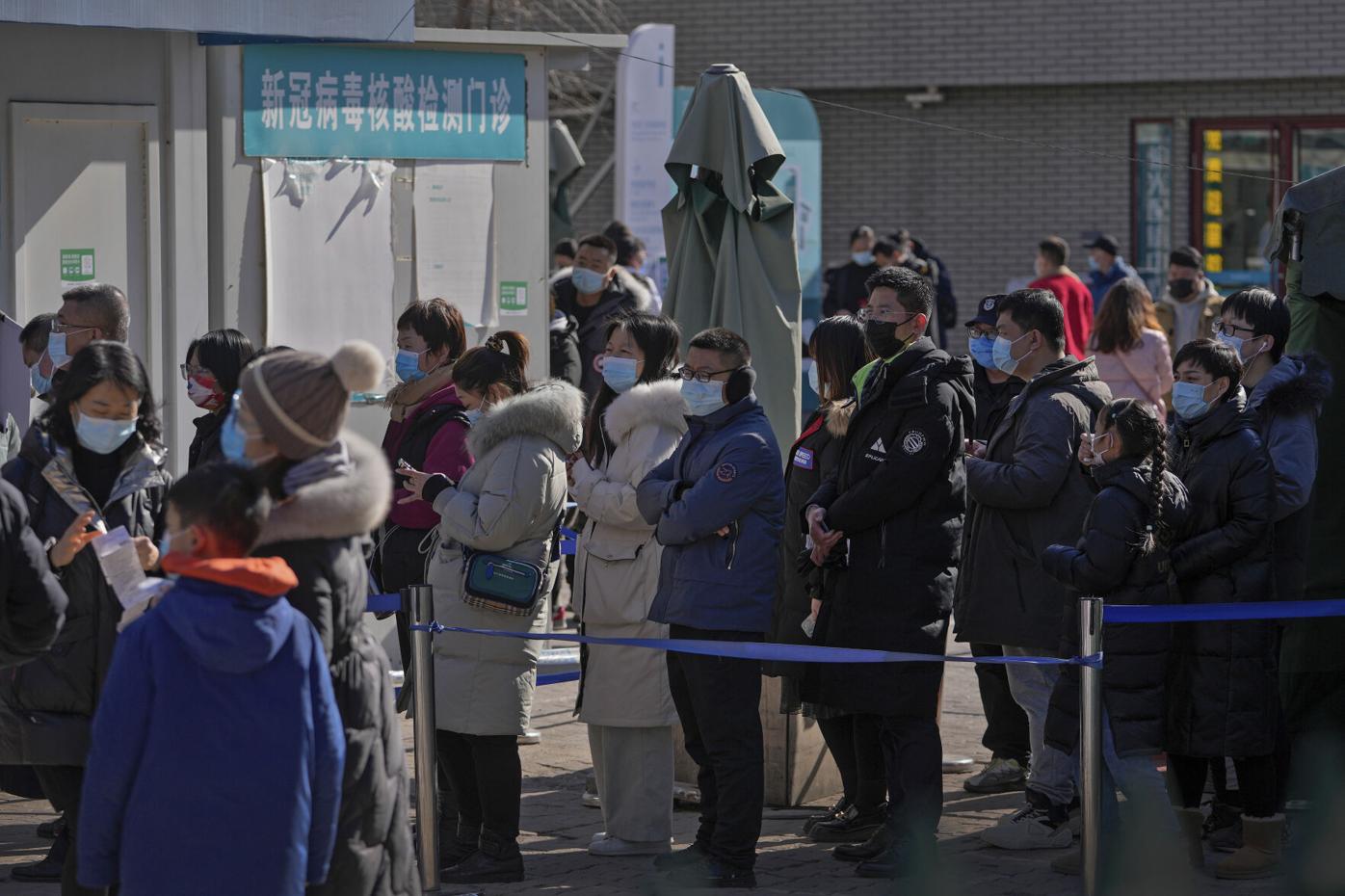China locks down southern city as omicron variant surges
Wed 09 Feb 2022, 12:42:51

Beijing: China has ordered inhabitants of the southern city of Baise to stay home and suspended transportation links amid a surge in COVID-19 cases at least partly linked to the omicron variant.
Classes have been suspended, non-essential businesses closed and mass testing of residents ordered. Restaurants are only permitted to serve take-out. Traffic lights have been switched to red only to remind drivers to stay home.
As of Tuesday, 135 cases had been reported in the city — at least two of them found to be omicron, health authorities said.
The city has become the latest to be placed under lockdown in keeping with China's “zero-tolerance” approach to the pandemic.
The policy requires strict measures be applied even when only a small number of cases have been found.
A major concern is preventing outbreaks during the ongoing Beijing Winter Olympic Games. No new cases were reported in the Chinese capital on Tuesday.
More than 30 athletes at the Beijing Olympics are in isolation facilities after testing positive for the coronavirus, organisers said Tuesday. The average stay in isolation is seven days.
Baise has an urban population of about 1.4 million, with another 3 million in the large surrounding rural area that abuts the Vietnamese border.
State media reported customs clearance at the crossing points of Longbang and Pingmeng were
delayed, causing further disruptions to cross-border trade that have already inflicted major losses on Vietnamese fruit farmers who rely on the Chinese market for much of their revenue.
delayed, causing further disruptions to cross-border trade that have already inflicted major losses on Vietnamese fruit farmers who rely on the Chinese market for much of their revenue.
The first cases in Baise were reported Saturday at the tail end of the Lunar New Year holiday, when many Chinese travel vast distances to their hometowns. For the third year running, the government asked people to remain in place to avoid a major spread, although such calls had only a slight effect on the numbers of trips taken.
Despite the occasional regional outbreak, China has largely brought the pandemic under control through lockdowns, mass testing, case tracing, mask mandates and other strict measures. Almost 85 per cent of the population is fully vaccinated, according to Our World in Data, although questions have been raised about the efficacy of Chinese vaccines, particularly against the omicron strain.
Chinese health authorities say the continuing emergence of outbreaks despite the high vaccination rate justifies the continued implementation of “zero-tolerance" policies and the quarantining of travelers arriving from abroad.
At the same time, lockdowns imposed in December and January on millions of residents of northern and central cities have been lifted.
China has reported a total of 106,524 cases of COVID-19, with 4,636 deaths. Currently, 1,473 people are in treatment for the disease.
No Comments For This Post, Be first to write a Comment.
Most viewed from International
Most viewed from World
AIMIM News
Latest Urdu News
Most Viewed
May 26, 2020
Do you think Canada-India relations will improve under New PM Mark Carney?
Latest Videos View All
Like Us
Home
About Us
Advertise With Us
All Polls
Epaper Archives
Privacy Policy
Contact Us
Download Etemaad App
© 2025 Etemaad Daily News, All Rights Reserved.

.jpg)






.jpg)
.jpg)


.jpg)
.jpg)
.jpg)
.jpg)
.jpg)
.jpg)
























